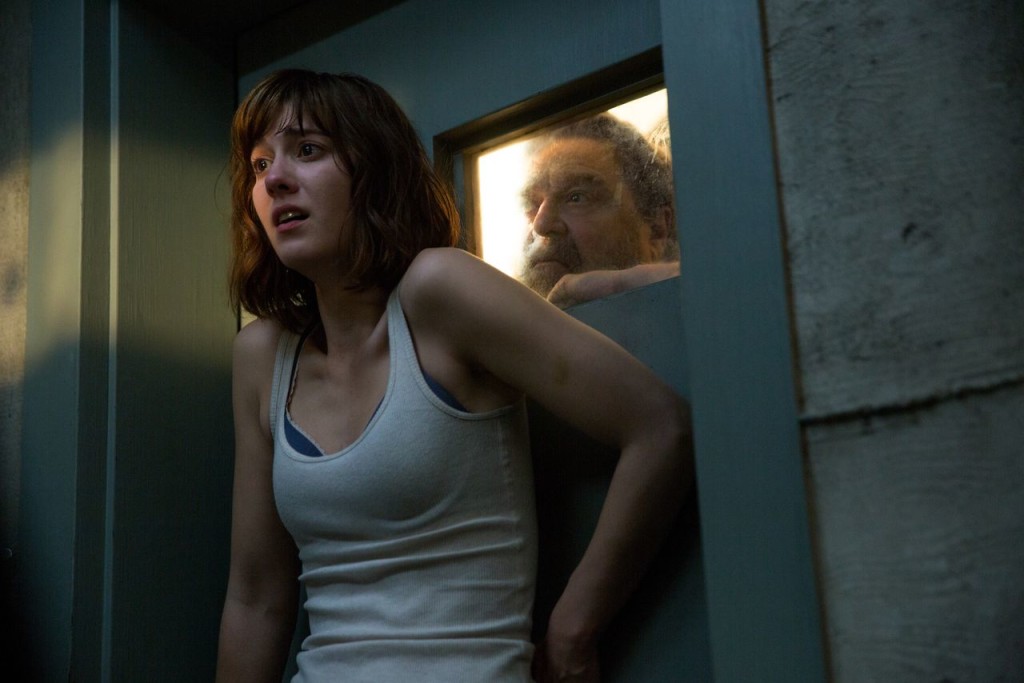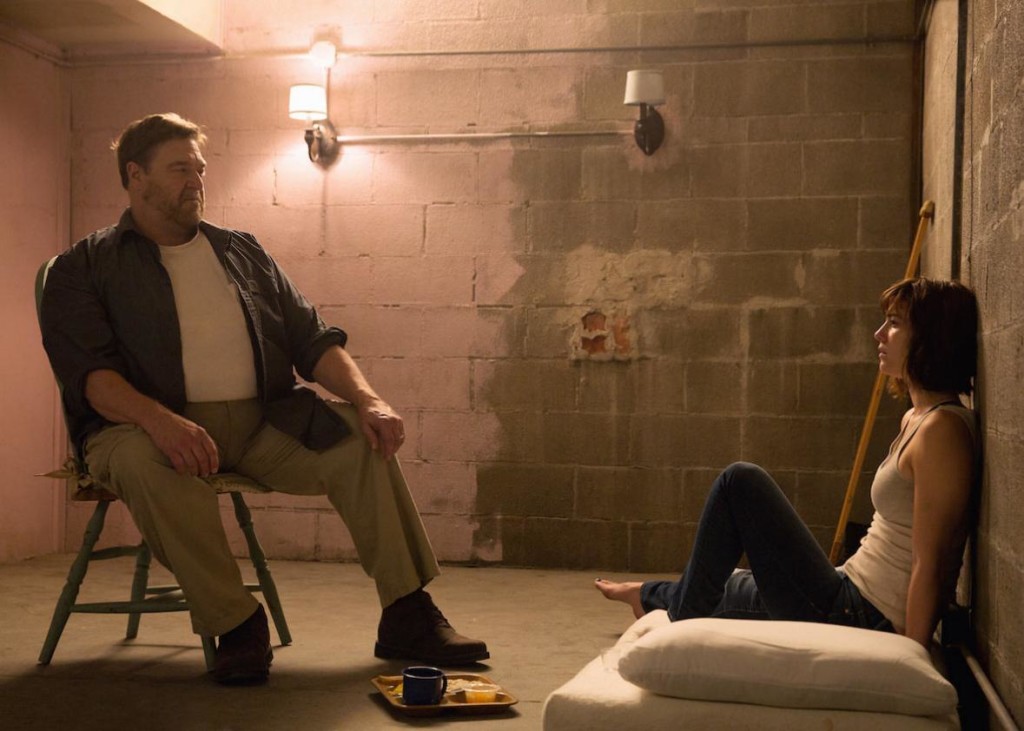What happens when you switch a whole lot of shit around in a great script? Today’s script-to-screen breakdown tells you!
Genre: Contained Thriller/Sci-fi
Premise: (IMDB) After getting in a car accident, a woman is held in a shelter with two men, who claim the outside world is affected by a widespread chemical attack.
About: This movie has had a weird journey. It started as a spec script unrelated to the Cloverfield franchise. You can check out my review of that script here. Then Bad Robot bought it and decided to turn it into a Cloverfield thing. The film came out this past weekend and did really well for a contained thriller, pulling in 25 million dollars off of a 15 million dollar budget. For comparison’s sake, the new Sascha Baron Cohen film pulled in 3 million dollars on a 60 million dollar budget (I’m sensing a Borat sequel very soon). The film’s success also hinted at a new avenue for screenwriters – writing specs that you can sneak into existing franchises.
Details: 103 minutes
Writers: Josh Campbell & Matthew Stuecken and Damien Chapelle
Cloverfield Lane has to be one of the strangest script-to-screens I’ve done so far. That’s because the writers changed a whole shitload of little things despite the fact that they didn’t have to. Nothing was wrong with the previous script. And yet despite all these changes, the movie still worked. In fact, BOTH versions of the screenplay worked great.
This goes to show that when you have a good premise or a good setup, it’s hard to screw things up. Sort of like how if you have good bone structure, it doesn’t matter if you grow a beard or have a strange haircut. What’s underneath is so structurally sound that you’re still going to look good regardless. This doesn’t even get into the final 20 minutes of the film, which I’ll be spoiling later in the review (You’ve had your warning!). So let’s get into it.
For those who didn’t read my previous review or see the movie, here’s a quick breakdown of the plot. A young woman, Michelle, wakes up in a room, chained to the wall, with no idea of how she got there. Eventually, Howard, an older large man and the owner of this place, comes in and tells Michelle that he saved her life.
He proceeds to tell her that they’re in an underground bunker and that the United States has been attacked by some sort of chemical weapon, which means they’re stuck here for two years. Also living in the bunker is the young man who helped Howard build it, Emmett. Michelle has her doubts that any of what Howard has told her is true and begins plotting her escape. But as the old saying goes, “Be careful what you wish for.”
Right away you noticed differences between the script and the movie. First off, instead of starting with Michelle waking up in the room, they start with her in the real world – first at home, then driving her car, then getting hit by another car and crashing.
I was shocked to see this. One of the most intriguing things about the original script was that we didn’t know if anything Howard was telling Michelle was real. He’d say he found her in a car, but both she and we were wondering, “Did he?” Here, we know he’s telling the truth since we saw it with our own eyes. This stole a lot of the mystery away from the script, and I’m still not sure why they did it.
I know that sometimes when a production is given more money (as is the case when you go from a contained no-budget thriller to a Cloverfield film), they feel like they have to use it somewhere, and therefore stick in some high-production-value shots at the opening of the film to show you, “This is a big movie.”
They made the exact same mistake with Source Code. It was critical in that film that we wake up with the main character in a train with no idea where we were or how we got there. Instead, they had some costly opening crane/drone shots of a train shooting down the tracks. Sometimes, less money can be better, as it means less temptation.
Anyway, once we’re in the room, waking up with Michelle, I noticed we were drawing this scene out way longer than in the original script. In the original script, Michelle wakes up, and a minute later this guy comes in, she attacks him, fails, and he tells her, “I’m here to help you!” Here, we stay with Michelle for awhile as she tries to figure out how to get out of the room.
I can understand this choice better. You’re in a contained location. It’s easy for things to become boring. You want to draw out any potential suspenseful situation you can. A girl waking up in a room without any idea of how she got there is inherently suspenseful, so I liked that we stayed with her for awhile as she tried to solve the problem.
Next up is Howard. In the original script, Howard has a meekness about him. In the new version, he’s much more dangerous. He has more of a “you need to walk around on eggshells around him” quality. It was an interesting choice because it definitely made the character more powerful. But one of the strengths of the previous version of the character was that even though he was meek, you had the sense that he could become dangerous at any moment. And we were always waiting for that dangerous moment to arrive.
Here, we know Howard is capable of being horrible from the get-go and it takes some of that mystery away. I’m still not sure how I feel about it. On the surface, he’s a more memorable character. But the other incarnation may have been better for the overall story.
Then there’s Emmett. Poor Emmett. Emmett was this cool dangerous unpredictable character in the last script. Here he’s a boring nice guy. If you’re like me, you’re probably wondering, “Why did they do that???” I’ll tell you exactly why. Once they changed Howard’s character into a more surface-level badass, he became too close in tone to Emmett. So they had to change Emmett’s character to complement him. Unfortunately, Emmett’s fate as an interesting character was sealed.
This felt to me like a “ran out of time” choice. Emmett is the third most important character in the script, and therefore the one that they’re not going to worry about until they have Howard and Michelle figured out. Once that happened, the obvious choice to complement Howard was to go “nice.” With more time, I’m sure they would’ve tweaked this, made Emmett nice-but-with-an-edge. But hey, it’s hard to be perfect in any screenplay.
A result of this choice was that there’s no longer an “Are they collaborating?” element to Howard and Emmett’s storyline. That was one of the strongest parts of the previous script so I’m surprised they removed that. However, someone pointed out in the comments of my previous review that there’s a famous play and/or short story that sets up this exact same premise, so I’m wondering if they dropped that simply to avoid a potential lawsuit. Man, writing screenplays is complicated!
Finally, there’s Michelle. They definitely improved this character, making her much more active. From the very first scene, she’s using tools to create an elaborate hook to drag her phone towards her while chained to the wall. Later she’s using liquor to create fires to force Howard to take her out of the room. She’s always thinking, always trying to escape. It wasn’t like she was passive in the last script. But she’s aggressively active here, and that has a huge effect on how we view her. It’s nearly impossible to dislike a character who’s in a bad situation yet won’t stop fighting. So that was another smart choice.
Finally, there’s the ending. This is spoiler territory and I’m not even sure it’s worth discussing, to be honest. Basically, the last 20 minutes of this movie became a completely different genre, which is totally bizarre. Now I knew this was coming, so it’s hard to gauge how successful the choice was. But I’m curious what people who had no idea what to expect thought when, all of a sudden, our main character is fighting aliens and spaceships. It’s a really weird way to end the movie.
But I have to admit, the nerdy side of me was desperately trying to figure out how this linked up with the original Cloverfield. In that movie, we had a giant monster. Here we have a fucking spaceship. What does that mean?? I want more Cloverfield movies to find out! I’m actually surprised that they still haven’t created a direct sequel to that surprise hit.
Anyway, like I said, this setup was so strong that the execution was malleable to the point where several hundred choices could’ve worked. So besides the lesson I’m about to teach you below, the takeaway here is: come up with a concept with strong bones.
[ ] what the hell did I just watch?
[ ] wasn’t for me
[ ] worth the price of admission
[x] impressive
[ ] genius
What I learned: Today we’re going to talk about the concept of EXPANDING. Expanding is something you’ll do between drafts. It’s the process by which you look for potentially dramatic situations within your scenes to create new “mini” or full scenes from. The final draft of Cloverfield Lane did a lot of expanding. For example, in the spec script, Michelle wakes up in that room, hears someone coming, and prepares to hit him. The writers of the script expanded this for the final cut. They decided that the first thing Michelle would try to do was call someone. But her phone was all the way across the room in her bag and she was chained to the wall. So Michelle has to use the objects around her to construct a pole which she then uses to reach across and pull the bag towards her, all with the threat of that man potentially coming in at any moment. There are expandable scenes everywhere. You just have to look for them.



